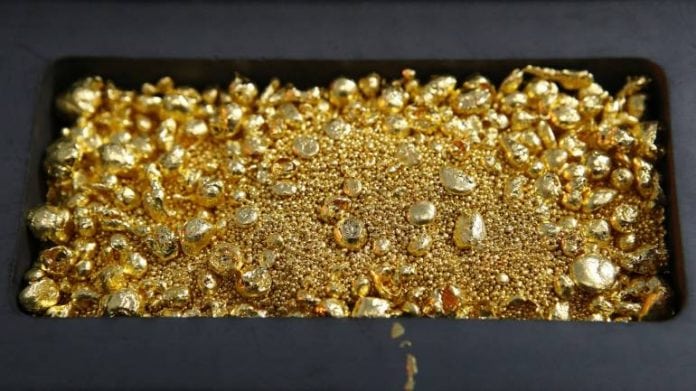- Advertisement -
Under R-GDS, customers can deposit their idle gold which will provide them safety and interest earnings, according to SBI.
State Bank of India or SBI, the country’s largest lender, also offers a special type of fixed deposit (FD) scheme denominated in gold. Under R-GDS or Revamped Gold Deposit Scheme (R-GDS), the customer can deposit the idle gold to earn an interest, according to SBI’s website – sbi.co.in. Individuals, proprietorship and partnership firms, Hindu undivided families (HUFs), trusts – including mutual funds/exchange-traded funds registered under market regulator Sebi’s regulations – and companies can invest in State Bank of India’s R- GDS, according to the bank’s website.
Here are 10 things to know about SBI’s Revamped Gold Deposit (R-GDS) Scheme:
- One can invest a minimum of 30 grams (gross) of gold under SBI’s R-GDS scheme. There is no maximum limit on the investment, according to the bank.
- Under this scheme, gold is accepted in raw form such as gold bars, coins, jewellery excluding stones and other metals, according to SBI.
- SBI offers three types of deposits under this scheme: a) Short Term Bank Deposit (STBD) – tenure 1-3 years; b) Medium Term Government Deposit (MTGD) – tenure: 5-7 years (deposit accepted by SBI on behalf of the central government; c) Long Term Government Deposit (LTGD) – tenure 12-15 years (deposit accepted by SBI on behalf of the central government).
- Under Short Term Bank Deposit (STBD), the current interest rates are: 0.50 per cent per annum for one year; 0.55 per cent per annum above one year-up to two years; and 0.60 per cent per annum above 2-3 years. Under Medium Term Government Deposit (MTGD), the interest is paid at the rate of 2.25 per cent per annum. Under Long Term Government Deposit (LTGD), the interest is paid at 2.5 per cent per annum, according to the SBI website.
- Interest on deposits under the scheme starts accruing from the date of conversion of gold deposited into tradeable gold bars after refinement or 30 days after the receipt of gold whichever is earlier.
- Under Short Term Bank Deposit, a non-cumulative interest is paid on March 31 every year or a cumulative interest is paid on maturity. The principal and interest on STBD is denominated in gold. On maturity, interest for the broken period is also paid, according to SBI.
- In the case of Medium Term Government Deposit & Long Term Government Deposit, the principal is denominated in gold. However, the interest is paid in rupees annually on March 31 or a cumulative interest is paid on maturity. Broken period interest is paid at the time of maturity. Interest is calculated on gold value in rupees, at the time of deposit, according to the SBI website.
- SBI allows the depositor the option to receive payment of simple interest annually or cumulative interest (compounding annually) on maturity. The option is to be exercised at the time of deposit.
- Under STBD, one has the option of taking a repayment of principal, either in gold or equivalent rupees as on the date of maturity. Under MTGD and LTGD, redemption of the deposit is in gold or rupees equivalent of the value of gold as per then prevailing price of gold. However, an administrative charge of 0.20 per cent is applicable in case of redemption in gold.
- Under STBD, premature payment is allowed after a lock-in period of one year with a penalty on the applicable interest rate. However, a Medium Term Government Deposit (MTGD) is allowed to be withdrawn any time after three years and a Long Term Government Deposit (LTGD) can be withdrawn after five years.


